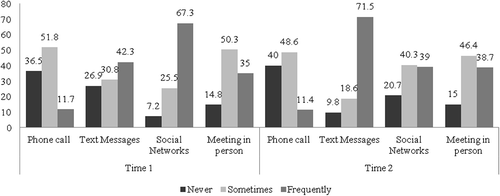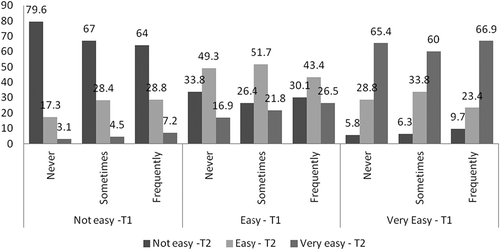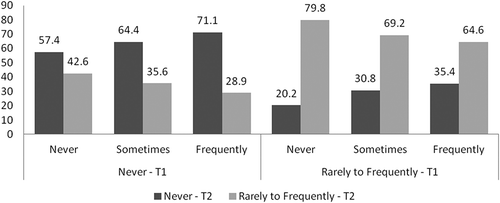Figures & data
Table 1. Percentage distribution of school victimization and peer relationships variables in times 1 and 2.
Table 2. Stepwise regression analyses of gender, age and online/offline communication in Time 1 as predictors of school victimization and quality of peer relationships in Time 1.
Table 3. Stepwise regression analyses of gender, age and online/offline communication in Time 1 as predictors of bullying and easiness to make friends in Time 2, controlling initial values.



